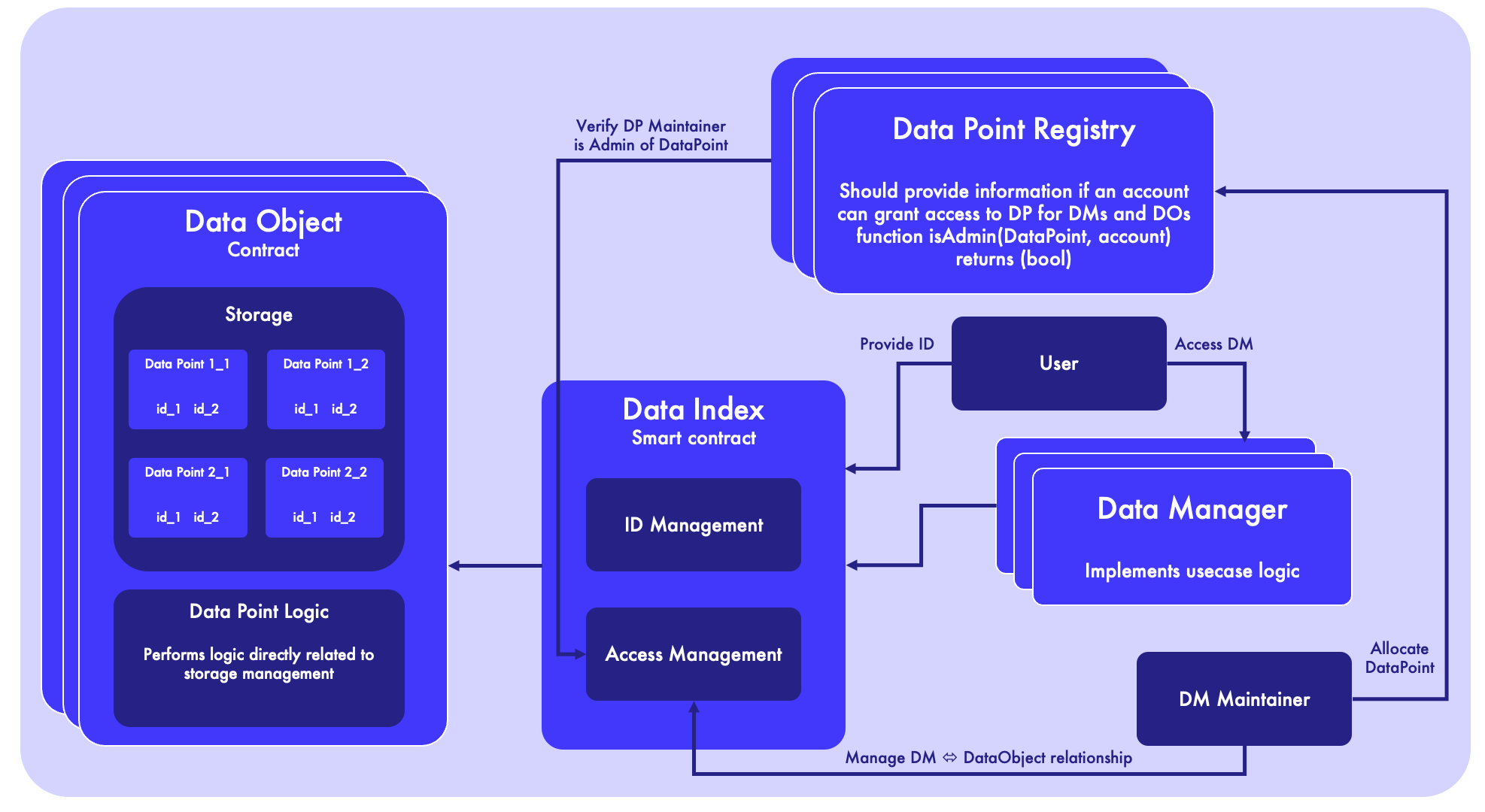Overview
The Nexera Standard (ERC-7208) introduces a modular approach for managing on-chain data. Driven by a data-oriented design, this standard promotes the separation of data from logic, making it a powerful tool for complex Smart Contract Architectures.
As Ethereum continues to expand, the need for improved on-chain, off-chain, and cross-chain functionalities increases. The Nexera Standard proposes a paradigm shift where data structures and functions operate independently (i.e. in separate smart contracts or blockchains).
This architecture design leads to the ability to upgrade business logic independently of the storage layer, offering a robust, future-proof solution that supports tokenization, identity, compliance mechanisms, omnichain operations, and much more.
The Nexera Standard promotes a deeper domain knowledge, enabling easy code adaptation, architecture versatility, and software interoperability across industries.
What is the Nexera Standard?
The ERC-7208, or Nexera Standard, is a programming paradigm that focuses on optimizing the structure and access patterns to on-chain data. By employing a series of interfaces used for indexing and managing data in Smart Contracts, the Standard emphasizes encapsulation and abstraction around Data Objects for storage, and the employment of Data Managers for managing the logic that governs the data.
This architecture provides flexibility and adaptability across diverse scenarios, enabling contracts to adapt over time. The Nexera Standard ensures that data is stored in dedicated contracts and governed by customizable interfaces that define their behavior in various environments.
-
Adaptability: Contracts can switch governing logic as needed, even integrating with existing standards to adapt over time.
-
Composability: Data can be shared across different smart contracts, supporting diverse applications concurrently.
-
Upgradeability: By separating storage from logic, modifications are simplified, allowing end-user applications to evolve with new requirements.
-
Future-Proofing: Existing token standards can be interoperable or expanded through a modular design, and remain compatible with new standards.
Motivation
The Nexera Standard is designed to work by coexisting with previous and future standards, providing a flexible, efficient, and coherent mechanism to manage asset interoperability.
We recognize there is no “one size fits all” solution to solve the standardization and interoperability challenges. Most assets - Fungible, Non-Fungible, Digital Twins, Real-world Assets, DePin, etc - have multiple mechanisms for representing them as on-chain tokens through the use of different standard interfaces. However, for those assets to be exchanged, traded, or interacted with, protocols must implement compatibility with those standards before accessing and modifying the on-chain data. Moreover, the immutability of smart contracts can hinder their ability to adapt to future functional requirements. A collaborative effort is needed to enable interaction between assets tokenized under different standards.
The Nexera Standard intends to solve interoperability issues by acting as a unified adapter mechanism driving the interactions between assets issued under different ERC standards. You should consider adopting this architecture if your smart contracts design will require one of the following:
-
Data Abstraction: A standardized interface for enabling developers to separate the data storage code from the underlying token utility logic, reducing the need for supporting and implementing multiple inherited -and often clashing- interfaces to achieve asset compatibility. The data (and therefore the assets) can be stored independently of the logic that governs such data.
-
Standard Neutrality: A neutral approach must enable the underlying data of any tokenized asset to transition seamlessly between different token standards. This will significantly improve interoperability among different standards, reducing fragmentation in the landscape. Our proposal aims to separate the storage of data representing an underlying asset from the standard interface used for representing the token.
-
Consistent Interface: A uniform interface of primitive functions abstracts the data storage from the use case, irrespective of the underlying token’s standard or the interface used for exposing such data. Both data as well as metadata can be stored on-chain, and exposed through the same functions.
-
Data Portability: We provide a mechanism for the Horizontal Mobility of data between implementations of this standard, incentivizing the implementation of interoperable solutions and standard adapters.
Architectural Overview: Interaction of Components

Fig 1. Architecture of the Nexera Standard.
- Data Managers define the business logic and interact with Data Objects to manage asset data using a standardized set of interfaces.
- Data Objects serve as storage containers, holding the asset data pointed to by Data Points.
- Data Points are the references within the Data Object, allocated by the Data Point Registry, and managed by the Data Manager to ensure dynamic and flexible data handling.
- Data Index ensures access control, validating and managing permissions for interactions with Data Points.
- Data Point Registry allocates Data Points and maintains their internal structure, ensuring compatibility across different implementations.